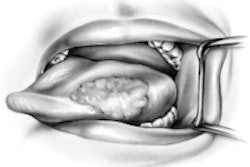Dear Oral Cancer & Diagnostics Insider,
Researchers from the U.K. and Norway have identified unique DNA markings that may predict the risk of developing head and neck cancer, according to a study in the journal Cancer. The discovery may lead to the development of noninvasive tests for early precancer screening, allowing at-risk patients to get earlier treatment and improve their survival. Read more in this issue's Insider Exclusive.
In other news in the Oral Cancer & Diagnostics Community, head and neck cancer patients who are hospitalized after surgery and do not receive anticoagulation therapy have an increased risk of blood clots, according to a study in JAMA Otolaryngology--Head & Neck Surgery. Click here to read about the therapy's advantages and side effects.
Meanwhile, young patients with recurrent squamous cell carcinoma of the tongue have 100% fatality rates within 16 months of the appearance of disease, compared with a 50% three-year disease-specific survival among older patients, according to a new study in Oral Oncology. Read what factors are behind this tragic phenomenon.
In other clinical research news, patients with more dental caries are less likely to be diagnosed with head and neck squamous cell carcinoma than patients with fewer or no caries, according to a new study in JAMA Otolaryngology--Head & Neck Surgery. Click here to read what's behind this surprising finding.
And a new study in from the U.S. Centers for Disease Control and Prevention found that the agency's recent antismoking advertising campaign has influenced more than 220,000 people to quit the habit. Click here for details about the successful effort.
Meanwhile, head and neck surgeons are knowledgeable about the human papillomavirus (HPV) and show positive attitudes about HPV education and vaccination, according to a new study. But the research also had some surprising findings. Click here for details.
In a related story, HPV may be to blame for the alarming increase of young adults with oropharyngeal cancer, according to researchers from Henry Ford Hospital in Detroit. Click here to read which ethnic groups have higher rates of the disease and better survival.
And the increasing use of bisphosphonates to treat osteoporosis is highlighting the role these drugs can play in the development of osteonecrosis of the jaw (ONJ) in cancer patients who have chemoradiation therapy. Read what risks and complications dental professionals should be aware of to detect and prevent ONJ in this new study in Oral Oncology.
Also, oropharyngeal carcinoma patients treated with intensity-modulated proton therapy were half as likely to need feeding tubes compared with patients treated with intensity-modulated radiation therapy. Click here to read which therapy produced lower toxicity levels in this study, which was presented at a recent meeting of the American Society for Radiation Oncology.
Finally, the delivery of cancer care in the U.S. is facing a crisis stemming from a combination of factors -- a growing demand for such care, a shrinking oncology workforce, rising costs, and the complexity of the disease and its treatment. Read what the Institute of Medicine recommends to improve cancer care.



















